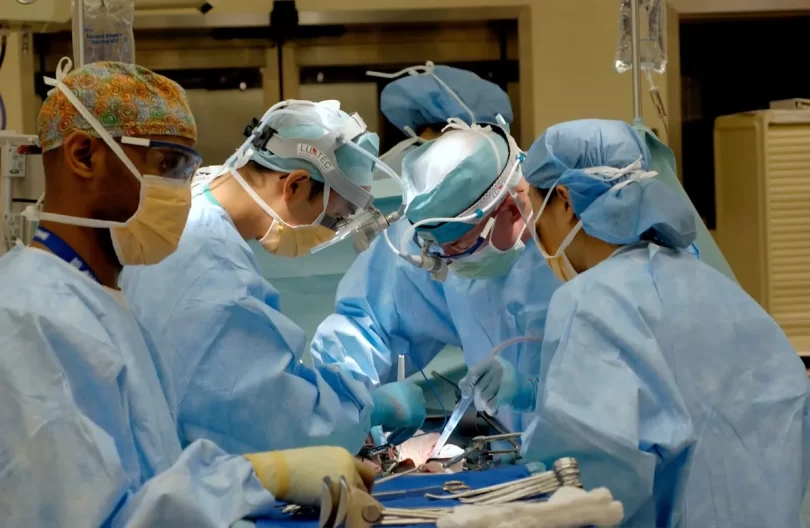Pilonidal cysts, often a source of discomfort and anxiety for those affected, can be a perplexing medical condition. These cysts form near the tailbone and can lead to infection, causing pain, swelling, and sometimes drainage of pus. When conservative treatment options fall short, surgical intervention becomes necessary. Delving into the complexities of this procedure, this article explores the surgical landscape of pilonidal cysts, providing crucial information on what one should understand about the process.
Contents
Understanding Pilonidal Cysts
Pilonidal cysts are skin and subcutaneous tissue formations typically occurring in the natal cleft near the upper buttocks. They are thought to arise due to hair penetration beneath the skin, leading to irritation and infection. This condition is more prevalent in men than women and usually affects young adults. Genetic predisposition, obesity, and sedentary lifestyles might increase susceptibility.
The cysts can become infected and form abscesses, requiring medical attention. Symptoms include pain, redness, and swelling in the affected area, often accompanied by fever if an infection is present. In some cases, a sinus—a small canal in the skin—may form, causing persistent drainage and skin irritation. Here you can find a video in a pilonidal cyst surgery.
Indications for Surgery
While not always necessary, surgery becomes a viable option when pilonidal cysts cause recurrent infections or significant discomfort. Chronic or severe cases that don’t respond to nonsurgical treatments—like antibiotics or drainage—may require surgical intervention. The main goal is the complete removal of the cyst cavity to prevent recurrence.
For many patients, quality of life can be significantly affected by untreated pilonidal cysts, leading them to consider surgical options. Surgery is particularly advised in cases where typical treatments prove ineffective, where lifestyle is hindered by the condition, or when there’s a constant cycle of infection and drainage.
Types of Pilonidal Cyst Surgeries
There are various surgical techniques available, each with its own advantages and disadvantages:
- Incision and Drainage: This procedure involves creating an incision in the cyst to allow for pus to escape, alleviating pain and pressure. However, it’s often a temporary solution, as it doesn’t remove the entire cyst, leading to possible recurrence. It’s typically used as an emergency intervention to manage acute infections.
- Cyst Excision: In this more definitive approach, the surgeon removes the entire cyst and any associated sinus tracts. There are several methods for wound closure post-excision, such as:
- Primary Closure: The edges of the wound are stitched together immediately after cyst removal. While this can offer quicker healing times, the risk of recurrence may be higher.
- Healing by Secondary Intention: The wound is not closed with stitches but left open to heal naturally from the bottom up, reducing the likelihood of recurrence but involving longer recovery times.
- Marsupialization: This technique involves removing the cyst and stitching the edges of the skin together, forming a pouch. It allows for continuous drainage and reduces recurrence chances, though it requires a longer healing time and diligent wound care to prevent infection.
- Flap Techniques: For recurrent or complex cases, advanced procedures such as the Bascom cleft lift or Z-plasty might be employed. These involve reconstruction of the area to minimize tension and improve healing outcomes. Such techniques can help in reshaping the contour of the cleft, thereby preventing future hairs from penetrating the skin.
Preoperative Considerations
Before undergoing surgery, a thorough evaluation by a healthcare professional is imperative. The patient’s medical history, including any previous surgeries or infections, should be reviewed. Consent for the procedure involves understanding the risks, benefits, and potential complications.
The preparation process might include preoperative testing and a discussion about anesthesia options. Maintaining hygiene in the affected area is essential to reduce infection risk during the surgical process. The patient may be advised to avoid certain medications, smoking, and alcohol in the days leading up to the surgery to optimize outcomes.
Potential Risks and Complications
Like any surgical procedure, pilonidal cyst surgery carries certain risks. Possible complications include infection, bleeding, delayed wound healing, and recurrence of the cyst. The risk of these complications can vary depending on the type of surgical procedure performed. Allergic reactions to medications and anesthesia issues also require consideration. Open discussions with healthcare providers can help mitigate these risks through tailored approaches to the individual’s needs.
Additionally, managing expectations regarding postoperative pain and healing time is crucial. Patients are encouraged to follow all medical advice closely, attend follow-up appointments, and report any unusual symptoms promptly.
Postoperative Care and Recovery
Effective postoperative care is crucial for a successful recovery. It typically includes keeping the wound clean and dry, regular dressing changes, and possibly, the use of antibiotics to prevent infection. Pain management strategies, combining medications and lifestyle adjustments, can aid in improving patient comfort.
Healthcare professionals often recommend limited physical activity post-surgery. Activities like sitting for extended periods should be minimized to prevent pressure on the surgical site. Following up with the medical team for wound assessments ensures appropriate healing and reduces the risk of recurrence.
Patients are also advised on diet, hydration, and potentially, stool softeners to prevent straining the surgical site. Education on wound care techniques, including when and how to change dressings, can empower individuals in managing their recovery efficiently.
Long-Term Management and Prevention
Preventing a recurrence of pilonidal cysts involves a combination of personal hygiene and lifestyle modifications. Regular hair removal in the affected area, either through shaving or laser treatments, can minimize the risk of hair penetration. Maintaining cleanliness and dryness of the area helps prevent infections.
Weight management and avoiding prolonged sitting on hard surfaces can also contribute significantly to reducing recurrence. Long-term strategies often focus on lifestyle adaptations that aim to lower the risk factors associated with pilonidal cysts.
In some cases, seeking continuous medical follow-up for skin evaluations and imaging can detect early signs of potential recurrences, allowing for early intervention.
Conclusion
Pilonidal cyst surgery, while common, requires careful consideration and expert management to ensure positive outcomes. Understanding the available surgical options, potential risks, and necessary postoperative care provides a solid foundation for those navigating this medical challenge. Empowering patients with knowledge about their condition and the surgical procedures available fosters informed decision-making and promotes optimal recovery.
By remaining informed about the latest developments in pilonidal cyst treatment and engaging in proactive health management, individuals can confidently face the complexities of this condition and work towards a discomfort-free future.







